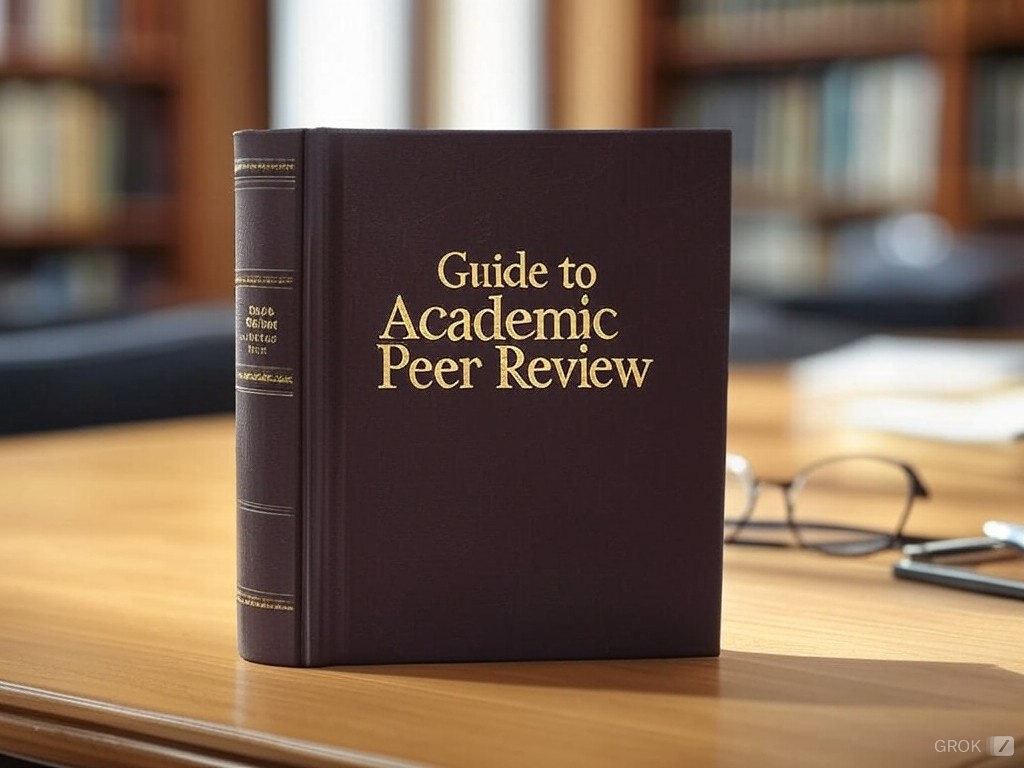Guide to Academic Peer Review: What to Expect and How to Respond

Guide to Academic Peer Review: What to Expect and How to Respond
The peer review process is a cornerstone of academic publishing, ensuring the quality and integrity of scholarly work. Whether you're submitting your first manuscript or responding to reviewer comments, understanding how to navigate peer review is essential for academic success.
This comprehensive guide will walk you through the peer review process, from initial submission to final acceptance, with practical strategies for addressing reviewer feedback effectively.
The typical peer review process includes:
- Initial submission and editorial screening
- Selection of peer reviewers
- Reviewer evaluation period
- Editorial decision
- Author revision process
- Final decision
Types of Peer Review
-
Single-Blind Review
- Reviewer identities hidden
- Author identities known
- Most common format
- Traditional approach
- Field-specific variations
-
Double-Blind Review
- All identities hidden
- Reduced bias potential
- Increased objectivity
- Author anonymization
- Citation considerations
-
Open Review
- Transparent process
- Public comments
- Visible identities
- Community engagement
- Ongoing dialogue
Common Types of Reviewer Feedback
-
Major Revisions
- Significant changes needed
- Methodological concerns
- Additional experiments required
- Substantial rewriting
- New analysis needed
-
Minor Revisions
- Clarity improvements
- Additional references
- Writing style adjustments
- Format corrections
- Data presentation updates
-
Technical Corrections
- Grammar and spelling
- Citation formatting
- Figure quality
- Statistical corrections
- Terminology consistency
Response Letter Example
Reviewer Comment: "The methodology section lacks detail about participant selection criteria."
Response: "Thank you for this observation. We have expanded the methodology section (pages 5-6) to include detailed participant selection criteria, including inclusion/exclusion parameters and recruitment procedures."
Changes Made: Added two paragraphs describing selection criteria and included a new table (Table 2) summarizing participant demographics.
Responding to Reviewer Comments
-
General Principles
- Be respectful and professional
- Address all comments
- Provide clear responses
- Document changes made
- Justify disagreements
-
Response Structure
- Point-by-point format
- Clear organization
- Specific page references
- Quoted text changes
- Supporting evidence
-
Strategic Approaches
- Prioritize major concerns
- Group similar comments
- Maintain positive tone
- Show appreciation
- Be thorough
Best Practices for Revision
-
Organization
- Track all changes
- Create revision plan
- Maintain version control
- Document decisions
- Review thoroughly
-
Communication
- Clear response letter
- Professional tone
- Complete explanations
- Timely submission
- Follow-up questions
-
Quality Control
- Check all changes
- Verify references
- Update figures/tables
- Proofread carefully
- Consistency review
- Ignoring reviewer comments
- Defensive or confrontational responses
- Incomplete documentation of changes
Frequently Asked Questions
Most journals expect revisions within 1-3 months. However, if major revisions are required, you may request additional time. The key is to communicate with the editor about your timeline and ensure your revisions are thorough rather than rushed.
Address each reviewer's comments separately and clearly explain your decisions. If there are contradictory suggestions, explain your reasoning for following one approach over another. The editor will make the final decision on how to proceed.
Yes, but do so respectfully and with strong supporting evidence. Explain why you disagree and provide references or data to support your position. Remember that the goal is to improve your paper, not to win an argument.
Other Articles You Might Like
AI for Writing: Revolutionizing Content Creation
Artificial Intelligence (AI) is rapidly reshaping industries around the world, and writing is no exception. Whether you're a blogger, marketer, student, or novelist, the adoption of AI-driven tools for writing can streamline your workflow, enhance creativity, and provide powerful assistance for various tasks. In this blog post, we'll delve into how AI is transforming writing, exploring its benefits, practical applications, and the best AI tools available today. We'll also consider the future potential of AI in writing, as well as ethical implications.
Thesis vs Dissertation: What's the Difference?
A thesis statement is the central argument or claim of your essay. It serves as the foundation for your entire piece, guiding the reader through your argument and providing a clear direction for your writing. Yet, many students struggle with crafting a concise and effective thesis statement. In this comprehensive guide, we'll explore how to write a thesis statement in a compelling way, focusing on techniques that align with what Yomu.ai and other academic AI writing tools are designed to help with...
The Best Books on Thesis Writing
Discover the best books on thesis writing, including academic guides, practical manuals, and insightful essays. Learn how to craft a compelling thesis statement, structure your paper, and enhance your research skills.
The Pros and Cons of Using an AI Writing Assistant for Content Creation
Discover the advantages, limitations, and best practices for integrating AI writing tools into your content creation workflow, with practical guidance for maximizing benefits while mitigating potential drawbacks.
Top 5 AI Writing Assistants for Bloggers and Content Creators
A comprehensive comparison of the best AI writing tools specifically designed for bloggers and content creators, analyzing their features, strengths, limitations, and ideal use cases.
What Does MLA Stand For?
The MLA (Modern Language Association) is a professional organization that provides guidelines for academic writing and research. It offers resources for writers, editors, and publishers, and promotes the study of language and literature. The MLA also publishes the Modern Language Journal, a scholarly journal for language and literature studies.
